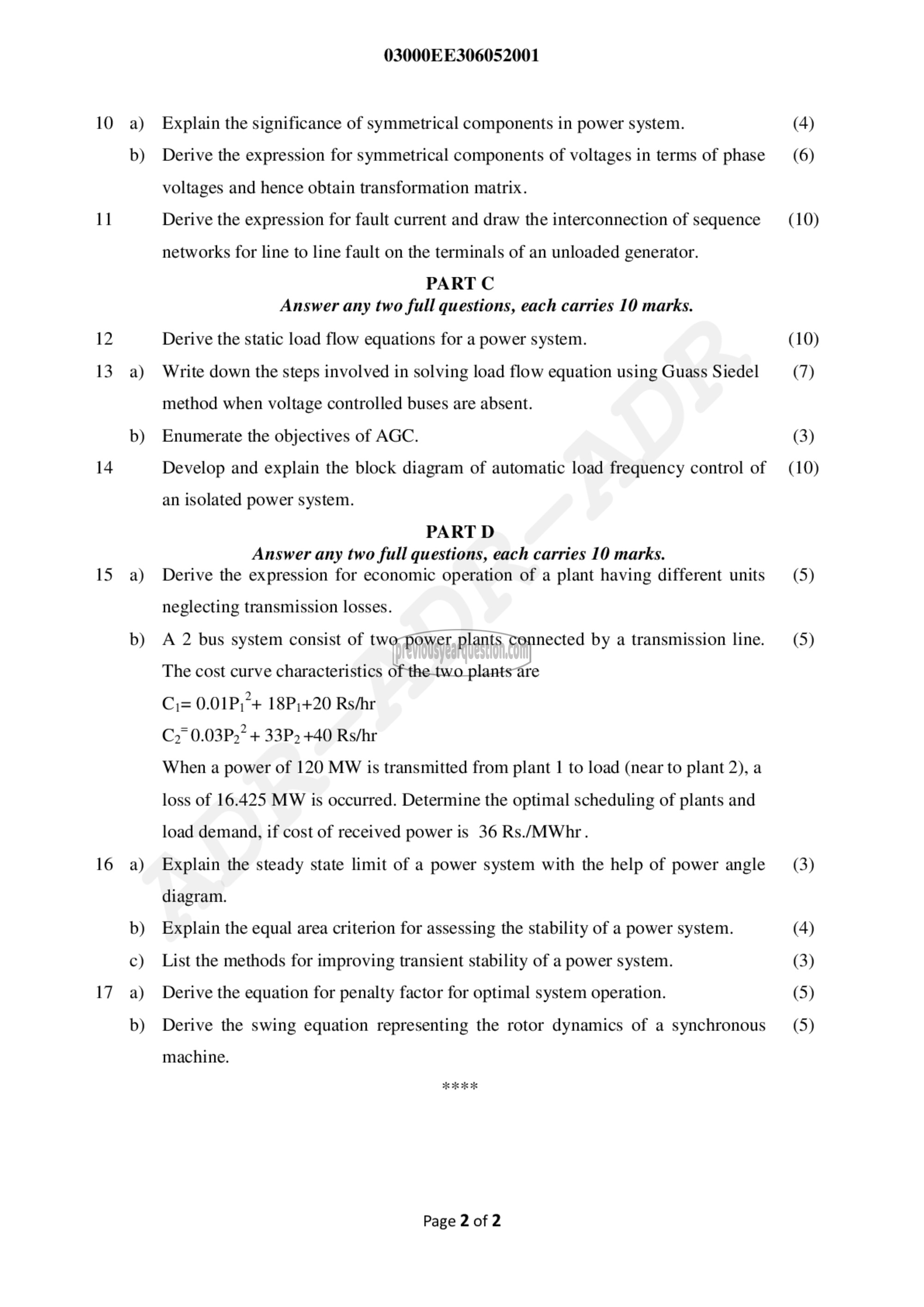APJ ABDUL KALAM TECHNOLOGICAL UNIVERSITY Previous Years Question Paper & Answer
Semester : SEMESTER 6
Subject : Power System Analysis
Year : 2020
Term : SEPTEMBER
Scheme : 2015 Full Time
Course Code : EE 306
Page:2
10
11
12
13
14
15
16
17
a)
b)
a)
b)
a)
b)
a)
b)
0)
೩)
0)
03000EE306052001
Explain the significance of symmetrical components in power system.
Derive the expression for symmetrical components of voltages in terms of phase
voltages and hence obtain transformation matrix.
Derive the expression for fault current and draw the interconnection of sequence
networks for line to line fault on the terminals of an unloaded generator.
PART C
Answer any two full questions, each carries 10 marks.
Derive the static load flow equations for a power system.
Write down the steps involved in solving load flow equation using Guass Siedel
method when voltage controlled buses are absent.
Enumerate the objectives of AGC.
Develop and explain the block diagram of automatic load frequency control of
an isolated power system.
PART D
Answer any two full questions, each carries 10 marks.
Derive the expression for economic operation of a plant having different units
neglecting transmission losses.
A 2 bus system consist of two power plants connected by a transmission line.
The cost curve characteristics of the two plants are
015 0.01, 182,420 Rs/hr
27 0.03P2° + 33P2 +40 Rs/hr
When a power of 120 MW is transmitted from plant | to load (near to plant 2), a
loss of 16.425 MW is occurred. Determine the optimal scheduling of plants and
load demand, if cost of received power is 36 Rs./MWhr.
Explain the steady state limit of a power system with the help of power angle
diagram.
Explain the equal area criterion for assessing the stability of a power system.
List the methods for improving transient stability of a power system.
Derive the equation for penalty factor for optimal system operation.
Derive the swing equation representing the rotor dynamics of a synchronous
machine.
بد بد oR
Page 2 of 2
(4)
(6)
(10)
(10)
(7)
(3)
(10)
(5)
(5)
(3)
(4)
(3)
(5)
(5)
